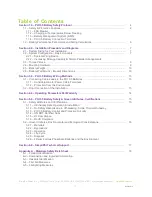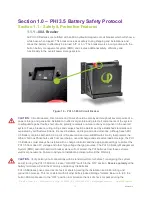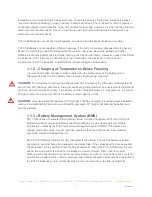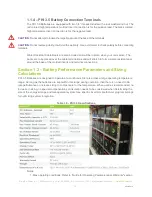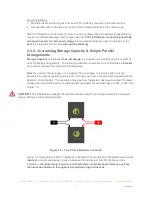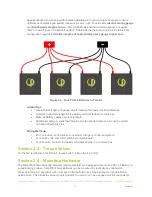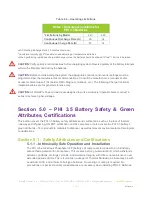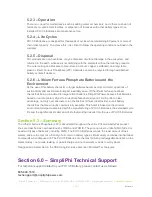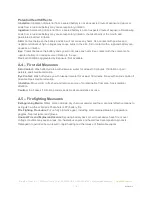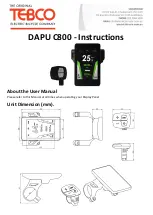
REV020918
SimpliPhi Power, Inc. | 420 Bryant Circle | Ojai, CA 93023, USA | (805) 640-6700 | info@simpliphipower.com |
SimpliPhiPower.com
| 17 |
Appendix A – Material Safety Data Sheet
A.1 – Product Identification
Product Name:
Electronically Managed Energy Storage Device (Battery)
Models:
PHI 2.6, PHI 3.5
Product Use:
Electric Power Supply - Harmony Code #8504.40.9540, Foreign Trade Schedule B
Manufacturer:
SimpliPhi Power, Inc., Ojai Ca. U.S.A. 805 640 6700
A.2 – Composition and Ingredient Information
Under normal use, this battery does not expose the user to hazardous ingredients.
USA:
This battery is an article pursuant to 29 CFR 1910.1200 and, as such, is not subject to the OSHA
Hazard Communication Standard Requirement.
The information contained in this Material Safety Data Sheet contains valuable information critical to the
safe handling and proper use of the product. This MSDS should be retained and available for employees
and other users of this product.
Canada:
This is not a controlled product under WHMIS. This product meets the definition of a
“Manufactured Article” and is not subject to the regulations of the Hazardous Products Act.
A.3 – Hazards Identification
Common Chemical Name
CAS #
Percent of
Content (%)
Classification &
Hazard Labeling
Lithium Ferrous Phosphate (LiFePo4)
15365-14-7
25-35
Eye, Skin, Respiratory
Irritant
Carbon, as Graphite
7440-44-0
12-18
Eye, Skin, Respiratory
Irritant
Aluminum Metal
7429-90-5
3-7
Inert
Copper Metal
7440-50-8
5-9
Inert
Electrolyte
12-17
Mixture:
Ethylene Carbonate
96-49-1
Flammable; Reactive;
Sensitizer
Dimethyl Carbonate
616-38-6
Eye, Skin, Respiratory
Irritant
Ethyl Methyl
Carbonate
623-53-0
Lithium
Hexafluorophosphate
21324-40-3
Table 5.0
Preparation Hazards and Classification:
Not dangerous with normal use. The battery should not be
disassembled or incinerated. Exposure to the ingredients contained within or their combustion products
could be harmful.
Appearance, Color, and Odor: Solid object, no odor.
Primary Route(s) of Exposure:
Risk of exposure will only occur if the battery or cell is mechanically,
thermally or electrically abused and the enclosure is compromised. If this occurs, exposure to electrolyte
solutions contained within the battery or cell may occur by inhalation, eye contact, skin contact
and ingestion.

